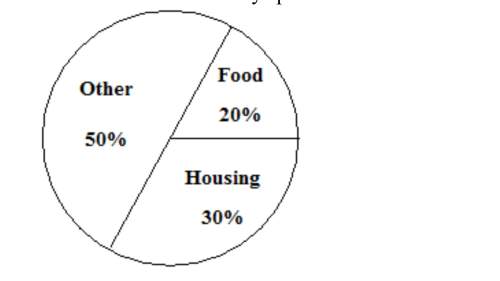Course:
Geometry
Unit:
Area and Volume
Assignment:
Packaging Project
<...

Mathematics, 20.10.2020 22:01 dulaneystrode
Course:
Geometry
Unit:
Area and Volume
Assignment:
Packaging Project
Project: Packaging (If you need help with this project, please look back at the Solids: Prisms, Solids: Pyramids, Solids: Cylinders, Solids: Cones, and Solids: Spheres lessons.)
Many people are surprised to find that math is found in the Bible in many places. God created all things and sustains all things. That includes math and shapes. In fact, the owner of a candy company has always been in awe of Noah’s Ark and how God instructed Noah to build it using very specific instructions. Noah's instructions were given to him by God in Genesis 6:15: “This is how you are to build it: The ark is to be 300 cubits long, 50 cubits wide and 30 cubits high.” The owner of the company knows that building an exact replica of Noah’s Ark may be difficult. Therefore, he would like to simplify things by assuming the ark is the shape of a rectangular prism. While the owner would really like to make his candy container in the shape of a rectangular prism to be able to closely model Noah’s Ark, he isn’t sure that solid shape will be the most efficient one for packaging the product.
He has hired you as their new production manager. Your job is to look at five different solid figures and determine which would best suit the needs of the company for packaging the candy. You will choose one of the five options shown below. The candy is animal gummies. The package must hold between 60 and 70 cubic inches (roughly 4-5 cups of space). The cost of the plastic for the packaging is $0.003 per square inch.
Your project should include the volume, total surface area, and materials cost for each solid given below, including the formulas you used and each step of your work. Be sure to find all measures for each solid, even if the solid does not meet the restraints that the company has given. Make sure to use the formulas given in your lessons, round your volume and area to the nearest hundredth, and round your cost to the nearest penny.
You also need to include a paragraph that answers the following questions:
Do all of the solids hold between 60 and 70 cubic inches?
Which solid is the most cost efficient (the packaging with the smallest materials cost that holds between 60 and 70 cubic inches)?
Would the Ark be most cost efficient solid for packaging? Why or why not?
Which solid would you recommend using? Why?
Why do you think that God was very specific in the measurements that He gave Noah for the Ark? Be sure to use some of your findings from this project to support your answer.
Solid 1:
Solid 2:
Solid 3:
Solid 4:
Solid 5:
Write a paragraph that answers the following questions:
Do all of the solids hold between 60 and 70 cubic inches?
Which solid is the most cost efficient (the packaging with the smallest materials cost that holds between 60 and 70 cubic inches)?
Would the Ark be most cost efficient solid for packaging? Why or why not?
Which solid would you recommend using? Why?
Why do you think that God was very specific in the measurements that He gave Noah for the Ark? Be sure to use some of your findings from this project to support your answer.

Answers: 2


Another question on Mathematics


Mathematics, 21.06.2019 17:00
In tossing one coin 10 times, what are your chances for tossing a head? a tail? 2. in tossing one coin 100 times, what are your chances for tossing a head? a tail? 3. in tossing one coin 200 times, what are your chances for tossing a head? a tail? deviation = ((absolute value of the difference between expected heads and observed heads) + (absolute value of the difference between expected tails and observed tails)) divided by total number of tosses. this value should always be positive. 4. what is the deviation for 10 tosses? 5. what is the deviation for the 100 tosses? 6. what is the deviation for 200 tosses? 7. how does increasing the total number of coin tosses from 10 to 100 affect the deviation? 8. how does increasing the total number of tosses from 100 to 200 affect the deviation? 9. what two important probability principles were established in this exercise? 10. the percent of occurrence is the obtained results divided by the total tosses and multiplied by 100%. toss the coins 100 times and record your results. calculate the percent occurrence for each combination. percent head-head occurrence: percent tail-tail occurrence: percent head-tail occurrence:
Answers: 3

Mathematics, 21.06.2019 18:00
Jack has a piece of red ribbon that is two times as long as his piece of blue ribbon. he says that he can use two different equation to find out how long his piece of red ribbon is compared to his piece of blue ribbon is. is he correct? explain his reasoning
Answers: 1

Mathematics, 21.06.2019 21:00
Isabel graphed the following system of equations. 2x – y = 6 y = -3x + 4 she came up with the solution (2,-2). what were the 3 steps she did to get that solution? (make sure they are in the correct order)
Answers: 2
You know the right answer?
Questions



Biology, 26.09.2019 07:30

Mathematics, 26.09.2019 07:30


Social Studies, 26.09.2019 07:30



Social Studies, 26.09.2019 07:30

Social Studies, 26.09.2019 07:30

History, 26.09.2019 07:30


Chemistry, 26.09.2019 07:30


Mathematics, 26.09.2019 07:30

Biology, 26.09.2019 07:30

Mathematics, 26.09.2019 07:30


History, 26.09.2019 07:30




